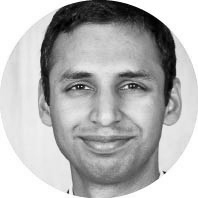supported by


Dr. Rao practices at Lahey Hospital and Medical Center in Burlington, Massachusetts. He is also an Assistant Professor of Ophthalmology at Tufts University School of Medicine and Medical Director of Lions VisionGift East in Boston, Massachusetts.
Please share with us your background.
I grew up in Plano, Texas, and was fortunate to receive a scholarship to attend college at Duke. While there, I became a basketball superfan and spent many nights camped out in a tent waiting for tickets to watch my Blue Devils beat UNC. I majored in chemistry and worked in a research lab investigating ways to inhibit angiogenesis. Outside of class, I volunteered with the campus American Red Cross chapter and had the opportunity to design and run a national college blood drive competition. I went to medical school at Baylor College of Medicine and completed my ophthalmology residency at Casey Eye Institute/Oregon Health & Science University, followed by cornea fellowship training at Tufts and Ophthalmic Consultants of Boston.
What drew you to ophthalmology and, specifically, to your field of interest?
My grandfather was an ophthalmologist in Hyderabad, India. His eye clinic was adjacent to the living room of my grandparents’ home and was an impeccably clean, bright, but unadorned white-tiled office separated from the rest of the house by a metal-framed glass door. I remember peering through that door as a child when no one was looking, fascinated by the equipment he had meticulously arranged in a cabinet behind the exam chair: a trial lens set in a case lined with red velvet, jars containing stainless steel instruments arranged by size, and an old British ophthalmoscope, its black enamel finish worn down at the dials from years of use.
In medical school at Baylor, my initial plan was to become a heart surgeon, but when I saw my first cataract surgery at Ben Taub Hospital in Houston, I was hooked. Watching the bright indocyanine green dye—then used to stain the anterior capsule for better visualization—circulating through the anterior chamber was strikingly beautiful. I remember the moment I decided I wanted to go into ophthalmology: when we saw that cataract surgery patient the next day in clinic, and the eye patch was removed. Her sheer joy at being able to see again was overwhelming. The potential to rapidly improve someone’s quality of life was, and still is, a source of inspiration. Perhaps those early memories of my grandfather’s ophthalmology clinic had more of an impact than I knew.
Please describe your current position.
I’m a cornea, cataract, anterior segment, and refractive surgeon at Lahey Hospital & Medical Center in Burlington, Massachusetts, a medium-sized hospital-based practice with 15 ophthalmologists and seven optometrists. I joined Lahey’s Ophthalmology Department about 5 years ago and am fortunate to have an extremely supportive department chairman. I operate 1 to 1.5 days a week, hold clinic 3 to 3.5 days a week, and have half a day each week for administrative time and research. I’m an Assistant Professor of Ophthalmology at Tufts University School of Medicine. Tufts residents rotate with us in their first and second years; working with them in the operating room and on research projects is tremendously rewarding. The residents often perform their first cataract surgeries with me. I am involved with the American Society of Cataract and Refractive Surgery (ASCRS) as a member of the Young Eye Surgeons (YES) clinical committee. I co-edit the YES Connect column in EyeWorld magazine, an ASCRS publication. Additionally, I’m on a couple of hospital committees and work on developing improvements to our electronic medical records system, Epic.
Who are your mentors?
At Baylor, I had many great mentors, including Douglas Koch, MD; Stephen Pflugfelder, MD; and Frank Kretzer, PhD. From Dr. Koch, I learned how to communicate complex concepts to patients. From Dr. Pflugfelder, I learned how to devise and delegate components of research projects. And from the positively elegant Dr. Kretzer, I learned how to make work fun.
At Casey, my mentors included Robert Watzke, MD; Eric Suhler, MD, MPH; Richard Hoffman, MD; and Howard Fine, MD. Dr. Watzke taught me the importance of studying the history of ophthalmology. From Dr. Suhler, I learned how to interact with patients in a relaxed manner that puts them at ease. From Dr. Hoffman and Dr. Fine, who staffed several of my cataract surgeries as a third-year resident, I learned how to move my hands to make intraocular surgical maneuvers safer and more efficient.
At Tufts, my primary mentors were Helen Wu, MD, and Michael Raizman, MD. They taught me everything I know about medical and surgical management of cornea and external diseases. They are both so dedicated to their patients and to teaching residents and fellows. They gave selflessly of their time, often staying hours after clinic ended to discuss patients with me.
Above all, my most cherished mentors are my parents, who have given me a lifetime of love, support, and guidance and are doing the same thing now for my kids.
What has been the most memorable experience of your career thus far?
My most memorable experience was traveling to rural India at the end of medical school to participate in a cataract camp organized by the Sankara Eye Hospital in Coimbatore. This type of outreach to underserved communities is a routine weekend trip for many residents training at charitable eye hospitals in India. Hundreds of townspeople came to a local schoolyard, and we used flashlights to check for cataracts. Most had extremely dense cataracts requiring small-incision cataract surgery. Those who needed surgery were bused 6 hours back to the main hospital and returned home a couple of days later.
What are some new technological advances that you have found particularly exciting? Which advances in the pipeline are you most enthusiastic or curious about?
I enjoy using new technology such as the femtosecond laser for cataract surgery and intraoperative wavefront aberrometry. Although there is debate about whether laser cataract surgery improves visual outcomes, I feel it has significant benefits in complex cataract situations. About 3 years ago, I transitioned from Descemet stripping automated endothelial keratoplasty (DSAEK) to Descemet membrane endothelial keratoplasty (DMEK), and I love how much faster my Fuchs dystrophy patients regain vision. More recently, I’ve switched to using preloaded DMEK tissue, which has helped to significantly shorten the duration of the surgery. I’m excited about the eventual use of corneal inlays for pseudophakic patients, which is currently being studied in clinical trials.
What is the focus of some of your research?
We’re assessing our surgical outcomes for intrascleral haptic fixation of IOLs. This is a technique for placement of an IOL in the absence of capsular support. I’m also a co-investigator in the National Eye Institute-sponsored Zoster Eye Disease Study (ZEDS), which will begin enrollment soon.
What is a typical day in your life? What keeps you busy, fulfilled, and passionate?
I’m lucky to have a very supportive family, including my amazing wife Sirisha, who is a dentist in the Boston area. We have two great kids, ages 3 years and 6 months, and a dog who loves to dig holes in wet dirt and chase chipmunks around our yard. I usually leave home for work around 8:00 am and typically return home around 5:30 or 6:00 pm. Some days, I’m in a rush to get to the day care on time. On some Thursday mornings, when I don’t have any administrative or research meetings, I get to be a stay-at-home dad and play with the kids for a few extra hours—those days are the best.
What advice can you offer to individuals who are just now choosing their career paths after finishing residency or fellowship?
For me, doing a fellowship after residency was a beneficial experience. It gave me the confidence to approach the most challenging medical and surgical cases. Although residents and fellows typically find jobs in private practice or at university-based academic hospitals, I would also suggest looking into non-university hospital-based practices that are affiliated with residency programs, such as Lahey. We have the benefits of working with residents and fellows without some of the unique demands of university-based academic hospitals.
Tell us about an innovative procedure you are performing or a new imaging/diagnostic tool that has improved your practice.
I’m enjoying the challenges of intrascleral haptic fixation for placement of IOLs when there is no capsular support. I currently utilize the Agarwal glued IOL technique and the Yamane double-needle flanged haptic technique. I also regularly perform corneal crosslinking for keratoconus using the KXL System (Avedro). It’s fulfilling to finally be able to offer crosslinking to our patients who have been waiting for years to have it done.



